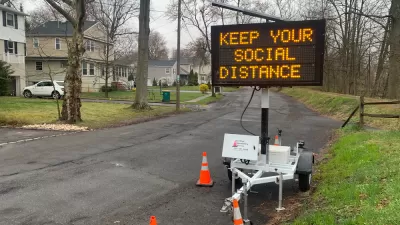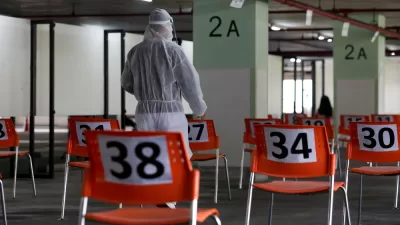In Amanda Erickson's explanation of the history of urban planning, the profession as conceived at the start of the 20th century confronted a choice between creating beautiful people or beautiful cities. Why couldn't planners have created both?
In the years before urban planning crystallized as a distinct profession, Erickson sees the influence of "three types of people thinking about how a city
should look and function - architects, public health officials, and
social workers."
According to Erickson, at America's first urban planning conference, held in New York in 1898, "and in the years that followed, any one of these
early urban planning strains could have taken over as the intellectual
giant in the field. Though the social workers and the public health
officials continued to play a role, urban planning's intellectual
history ended up grounded in architecture."
In this "brief history," Erickson concludes that the profession's grounding in design and physical space led directly to the use of planning as a tool for oppression. "As Stuart Meck, a professor of urban planning at Rutgers explains,
cities used urban planning not to build better, or cleaner, or morally
uplifting cities. They used planners to divide the city, creating
beautiful spaces at the expense of the poor."
FULL STORY: A Brief History of the Birth of Urban Planning

Alabama: Trump Terminates Settlements for Black Communities Harmed By Raw Sewage
Trump deemed the landmark civil rights agreement “illegal DEI and environmental justice policy.”

Study: Maui’s Plan to Convert Vacation Rentals to Long-Term Housing Could Cause Nearly $1 Billion Economic Loss
The plan would reduce visitor accommodation by 25% resulting in 1,900 jobs lost.

Planetizen Federal Action Tracker
A weekly monitor of how Trump’s orders and actions are impacting planners and planning in America.

Wind Energy on the Rise Despite Federal Policy Reversal
The Trump administration is revoking federal support for renewable energy, but demand for new projects continues unabated.

Passengers Flock to Caltrain After Electrification
The new electric trains are running faster and more reliably, leading to strong ridership growth on the Bay Area rail system.

Texas Churches Rally Behind ‘Yes in God’s Back Yard’ Legislation
Religious leaders want the state to reduce zoning regulations to streamline leasing church-owned land to housing developers.
Urban Design for Planners 1: Software Tools
This six-course series explores essential urban design concepts using open source software and equips planners with the tools they need to participate fully in the urban design process.
Planning for Universal Design
Learn the tools for implementing Universal Design in planning regulations.
Caltrans
Smith Gee Studio
Institute for Housing and Urban Development Studies (IHS)
City of Grandview
Harvard GSD Executive Education
Toledo-Lucas County Plan Commissions
Salt Lake City
NYU Wagner Graduate School of Public Service





























